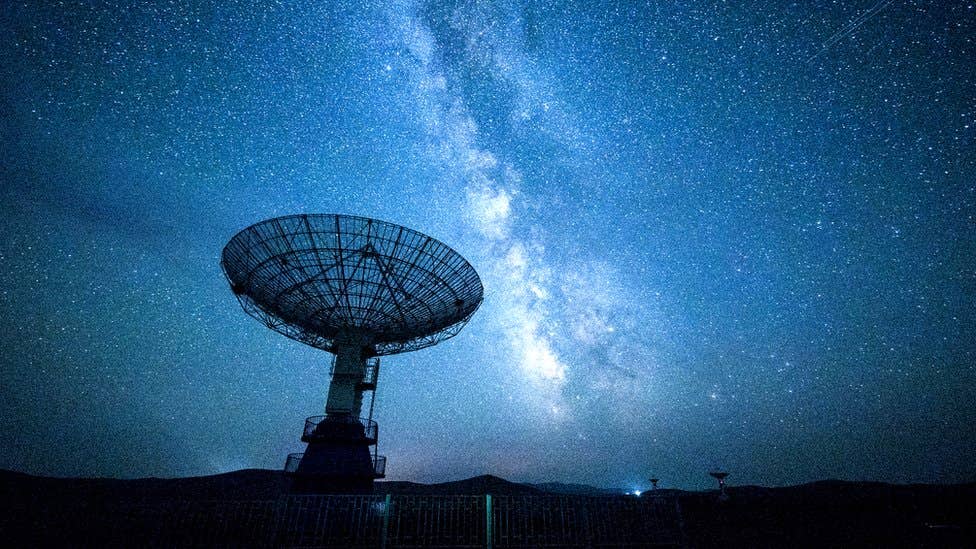Massive search for alien life among billions of stars completed – surprising results
Researchers in Australia say their latest project scanned billions of stars and 144 known exoplanets for signs of alien broadcasts.

[Feb 20, 2022: Chris Melore]
Researchers in Australia say their latest project scanned billions of stars and 144 known exoplanets for signs of alien broadcasts — but ultimately found nothing. (CREDIT: Getty Images)
PERTH, Australia — The quest to find alien life in the cosmos has come up empty in one of the biggest searches to date. Researchers in Australia say their latest project scanned billions of stars and 144 known exoplanets for signs of alien broadcasts — but ultimately found nothing.
A trio of scientists used the Murchison Widefield Array, a collection of more than 4,000 spider-like antennas in the Western Australian desert, to listen for alien “technosignatures” near the heart of the Milky Way galaxy. They kept this array focused on this region in space for over seven hours, scanning for broadcast signals at a high frequency of 155 MHz
This array is capable of picking up low-frequency radio waves out in space, which could be a sign of intelligent life on other worlds. The Galactic Center (GC) has been a prime target for astronomers looking for intelligent aliens in the universe. With countless stars here, there’s a chance some are home to planets, and if some of those planets are habitable, they may contain life which can communicate with us.
“Separate to the propensity of life to emerge, the GC’s high stellar density may be advantageous to the growth of advanced space-faring societies. Such societies are likely to be capable of producing technosignatures detectable across large distances,” writes study author Chenoa Tremblay and her team in a preprint server arXiv.
Related Stories
“On Earth, low-frequency radio signals, like those used by FM radio, are a ubiquitous choice for communications. Many astrophysical processes give rise to low-frequency radio emission, and as such numerous large and sensitive low-frequency radio telescopes have been built, including the current-generation Murchison Widefield Array,” the study authors explain.
Unfortunately, the study in late 2020 turned up nothing. At least in that part of the galaxy, astronomers couldn’t find a single technosignature that denotes intelligence.
There’s still plenty of space to explore
The new search is the fourth in a series of low-frequency searches for alien broadcast signals. However, this one was much bigger and more wide-ranging. A previous scan of the heavens only focused on 38 exoplanets, monitoring for low-frequency signals for just two hours.
The new search also included 3.3 million stars that were part of The Galactic Nucleus Survey (GNS). To put the new report into perspective, all of those stars in the GNS only make up less than one percent of the area the Murchison Widefield Array scanned this time.
While it may look like this was a big swing-and-miss for astronomers, even this massive field of stars is just a drop in the cosmic ocean. The team also notes that the Galactic Center is also very “dusty,” which can obscure possible signals coming from this region.
Moreover, the scientists from Curtin University and the SETI Institute note that, if aliens exist and are broadcasting, they may not be using the same technology humans use to send signals into space.
The team’s findings have been accepted for publication in the journal Publications of the Astronomical Society of Australia.
For more science stories check out our New Discoveries section at The Brighter Side of News.
Note: Materials provided above by Chris Melore. Content may be edited for style and length.
Like these kind of feel good stories? Get the Brighter Side of News' newsletter.
Tags: #New_Discoveries, #Universe, #Astronomy, #Cosmology, #Universe, #Aliens, #Life, #Science, #Research, #The_Brighter_Side_of_News
Joseph Shavit
Head Science News Writer | Communicating Innovation & Discovery
Based in Los Angeles, Joseph Shavit is an accomplished science journalist, head science news writer and co-founder at The Brighter Side of News, where he translates cutting-edge discoveries into compelling stories for a broad audience. With a strong background spanning science, business, product management, media leadership, and entrepreneurship, Joseph brings a unique perspective to science communication. His expertise allows him to uncover the intersection of technological advancements and market potential, shedding light on how groundbreaking research evolves into transformative products and industries.



